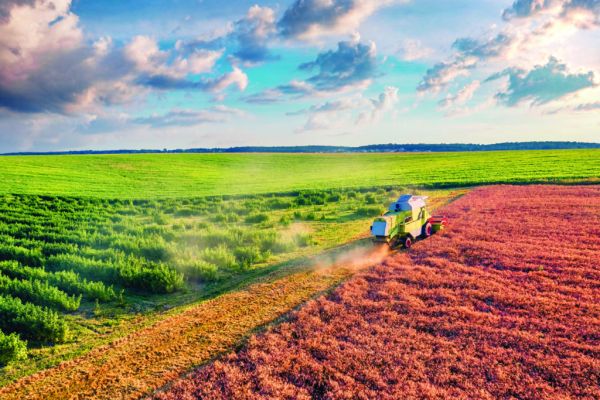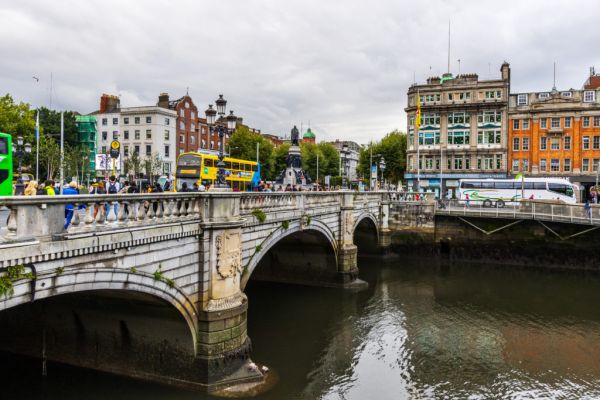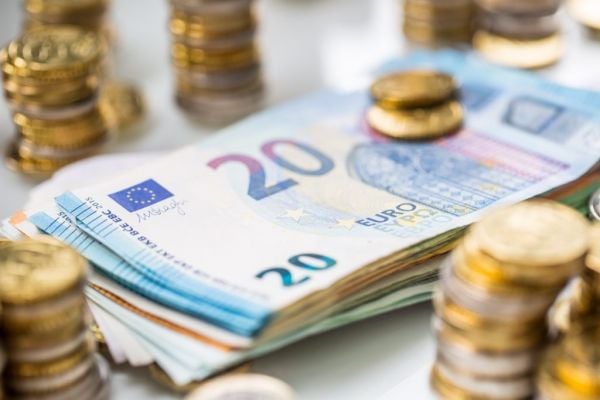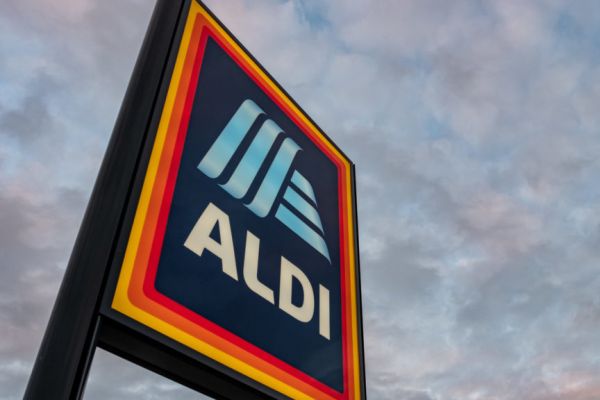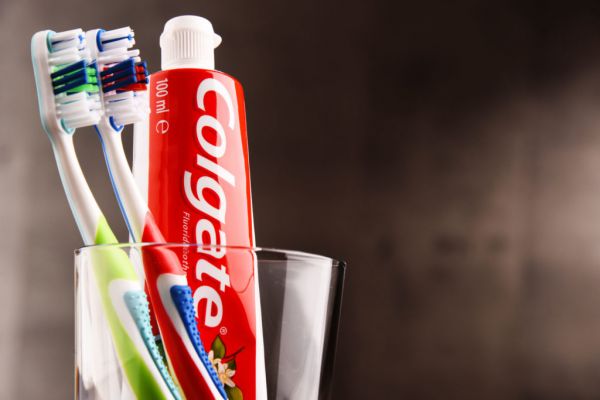As the decade progresses, you can expect to hear a lot more about how retailers and consumer goods firms are tackling scope 3 emissions. David Burrows reports.
Cast your eyes around the websites and sustainability reports of major European supermarkets and the most prominent graphics, tables and statistics suggest they are doing a cracking job in cutting their carbon emissions.
But the details and data, by and large, concern only scope 1 and 2 emissions – their direct, or operational emissions.
Progress on scope 3 (indirect, or supply chain) emissions, which account for upwards of 90% of a supermarket’s footprint and need to be dramatically cut in order to reach net-zero, is sketchier. This isn’t surprising.
Scope 3 covers emissions that arise as a consequence of the activities of a company but occur from sources not owned or controlled by it.
So, for a supermarket selling a vast range of products (from sausages to shower gel and yogurts to yoga mats) to consumers (who then use, consume and dispose of them), the possible sources of scope 3 emissions can be endless.
Think raw materials, manufacture of goods, transport and distribution, waste generation, employee commuting, fuel-related activities, customer travel, delivery services, use of sold products by consumers, and end of life treatment of sold products. The list goes on, and on.
This has left companies drowning in a deluge of data.
As John Lewis noted in its 2021/22 sustainability report, the process of unpicking scope 3 emissions involves 'working with millions of rows of data and, at times, making assumptions when detailed data is unavailable' – and those assumptions can leave brands open to attack from NGOs.
And yet some are beginning to grips with this.
Making Commitments
I have been looking at the net-zero commitments made by the UK’s ten largest supermarket chains.
Seven have already published a breakdown of their scope 3 emissions, while six have targets in place to reduce them.
At Asda, for example, scope 3 accounts for 97.7% of the total footprint, or 29.7MtCO2e.
Of that, 51% (15.6MtCO2e) comes from the products it sells (everything from farming of ingredients and processing products to packaging), 24% (7.3MtCO2e) from customers using the petrol sold to them, and 15% (4.6MtCO2e) from shoppers using the products (cooking, washing clothes and disposing of products and packaging).
Such a comprehensive approach to the measurement and reporting of scope 3 emissions is relatively new for most food businesses – scope 3 reporting has historically extended to categories like business and employee travel, which make up a tiny portion of these indirect emissions.
The pressure is now on for all companies to come clean on their full carbon footprint.
“Transparency in the food sector has been a challenge [and] it’s not always easy to know what’s happening on the ground,” explains Maddy Diment, researcher at Tortoise Media.
She’s involved in The Better Food Index, which scores food companies on key metrics, including their environmental impact.
The most recent iteration found that some were grossly underestimating their scope 3 emissions, while a third of the 30 assessed didn’t report scope 3 emissions at all.
Manufacturers of own label products were a particular concern: they have flown under the radar for too long, Diment suggests.
Net Zero Nosiness
Laggards should be increasingly nervous about being called out, especially as more and more companies divulge their full footprints – one expert tells the tale of the chairman at a retailer being grilled by institutional investors on the minutiae of scope 3 accounting, which wouldn’t have happened five years ago.
The fact that some companies have begun to dive deeper and wider than ever is encouraging.
Supplier engagement has been key to this.
Companies up and down the supply chain are being nudged to provide more quantitative and qualitative data.
As Emma Keller, head of sustainability at Nestlé UK & Ireland puts it, everyone is getting a bit more ‘nosy’, but with good reason.
Carbon Cloud, which helps brands like Oatly and Naturli calculate their carbon footprints, recently referred to the supply chain as the 'X factor' in identifying and solving the climate risks and opportunities that matter to food and drink companies.
Danone won’t reach net-zero without the help of its dairy farmers, for example, while Nestlé has no chance of halving its emissions by 2030 without significant interventions in the production of the ingredients it sources, which account for 71.4% of its 92MtCO2e in-scope emissions.
Keller is keen to point out that companies are at very different stages in their net-zero journey – she has been on calls with retailers and some suppliers are hearing the term ‘scope 3’ for the first time.
“What's so important is it can't just be ‘here's some questions, good luck’,” she explains.
“It's about collaboration […] because we don’t win if our suppliers don’t come along with us.”
Speak to brands and businesses and the c-word, collaboration, comes up time and again.
Many of the biggest manufacturers and supermarkets have begun by targeting a few big suppliers.
Unilever, for example, said that it is 'working with' the 300 suppliers that contribute most to its overall footprint, but will eventually need to 'empower' every one of the 55,700 others to take action.
Made to measure Asda, meanwhile, has set up an intriguing traffic light system that ranks its suppliers based on data relating to scope 3 emissions, packaging and food waste, and consumer behaviour.
The ‘bull’s eye’ suppliers have red flags across the board and will need strategic plans put in place.
Susan Thomas, senior director for sustainability, uses a fictional example to explain how it works.
“Say our largest single carbon emitting supplier is three times as carbon intensive as the average, the packaging recyclability may only be at 66% when the target is 100%, and their food waste is double the normal rate.
"If they've also got the highest under trade in eco-centric customers that'll be a bull's eye supplier.”
The supermarket is working closely with all these, as well as the 'critical contributors,' which are red in just one of the areas.
Identification of the ‘reds’ is the first step; how to incentivise them to go green is the next.
This is an area to watch closely in the coming months.
“While they can impose contractual obligations on immediate suppliers, it is uncertain how much influence supermarkets could reasonably have on reducing emissions from the remoter end of the supply chain,” says Anne Marie Taylor from law firm DWF.
Cash For Carbon
Honor Cowen, retail and consumer sector lead at Anthesis, a consultancy, says that supply chain financing initiatives are gaining traction.
Her team has been working with Tesco and its finance partner, Santander, on a new sustainability-linked supply chain finance product that gives suppliers preferential financing rates based on their disclosure of emissions, setting of reduction targets, and delivering on them.
That the supermarket is leveraging its credit and reputation to support its suppliers’ efforts on net-zero shows it’s “really serious about carbon,” says Cowen.
When it comes to supplier engagement, some will be using carrots and others will be reaching for sticks.
Mostly, it will be a mixture of the two.
There is an argument that supermarkets are just passing the buck down the supply chain.
The reality is that they can't do everything.
"They need to push some responsibility to the brands they stock," explains Ignacio Gavilan, sustainability director at the Consumer Goods Forum, so they can focus on the products they source directly and where they can have an impact.
“For me, that’s agriculture,” he adds.
French retailer, Carrefour, for example, has challenged its suppliers to cut emissions by 20MtCO2e by 2030 (versus 2019), and will establish an online platform so progress can be tracked.
Big suppliers will need to make climate commitments, with Carrefour also shrinking the impact of its own products by reducing packaging materials, combating deforestation, and developing low-carbon agricultural practices.
There is currently incredible momentum behind regenerative farming practices and the role these could play in curbing emissions from food production.
Emissions from farming form a considerable chunk of a food retailer’s scope 3 emissions and supermarkets are beginning to “step into that space where there’s not a big supply in between them and the emissions”, says Simon Miller, co-founder at 3Keel, a consultancy that works with FMCG companies.
Dutch multi-national retail and wholesaling company, Ahold Delhaize, which notes that the 'biggest opportunity' to reduce carbon emissions in scope 3 is in agriculture, is focused on 'partnering with farmers in this transition [to net-zero], by incentivising sustainable change through longer-term contracts with concrete environmental requirements and co-investments on their farms'.
At European diary giant Arla, where 83% of emissions come from the farms supplying it, the target is to reduce emissions per kilo of milk by 30% by 2030.
This will be through a range of activities, from breeding to manure management, and producers who get on board will be ‘rewarded with a higher milk price.’
Difficult Diets
Of course, suppliers are not the only scope 3 challenge facing retailers: consumers also present a conundrum.
A third of scope 3 emissions in retailers can be directly attributable to consumers after the point of purchase, according to consultants at OC&C.
This is as high as 87% for electrical retailers, but as low as 16% for grocers.
For the latter, the most impactful actions 'by some distance' relate to changing diets, in particular reducing livestock products.
Supermarkets understand this – Carrefour says it is ‘subject to risk related to new consumption habits,’ including reduced consumption of animal products – but are struggling to shift the dial.
Perhaps some are holding onto the idea that production efficiencies and future technologies will mean that consumption patterns won’t have to change.
This is folly.
Portfolios must change, consumers will need incentives to buy less and better meat, and farmers will need to be supported in this transition.
Decarbonising meat and dairy is incredibly hard – there are commercial and technical challenges, as well as ones relating to influence, over both suppliers and consumers.
Indeed, supermarkets that jumped on the net-zero bandwagon in a flurry of activity 12 months ago at COP 26 have spent much of the past year coming to terms with the carbon commitments they’ve made.
Scope 3 has spooked many, if not all of them.
The figures are huge – across the nine UK supermarkets that have published scope 3 emissions, the total amounts to 199.6MtCO2e, against 4.2MtCO2e for scopes 1 and 2 – and the reduction targets are hairy.
Increasingly, however, there is no place to hide.
© 2022 Checkout – your source for the latest Irish retail news. Article by Maev Martin.
